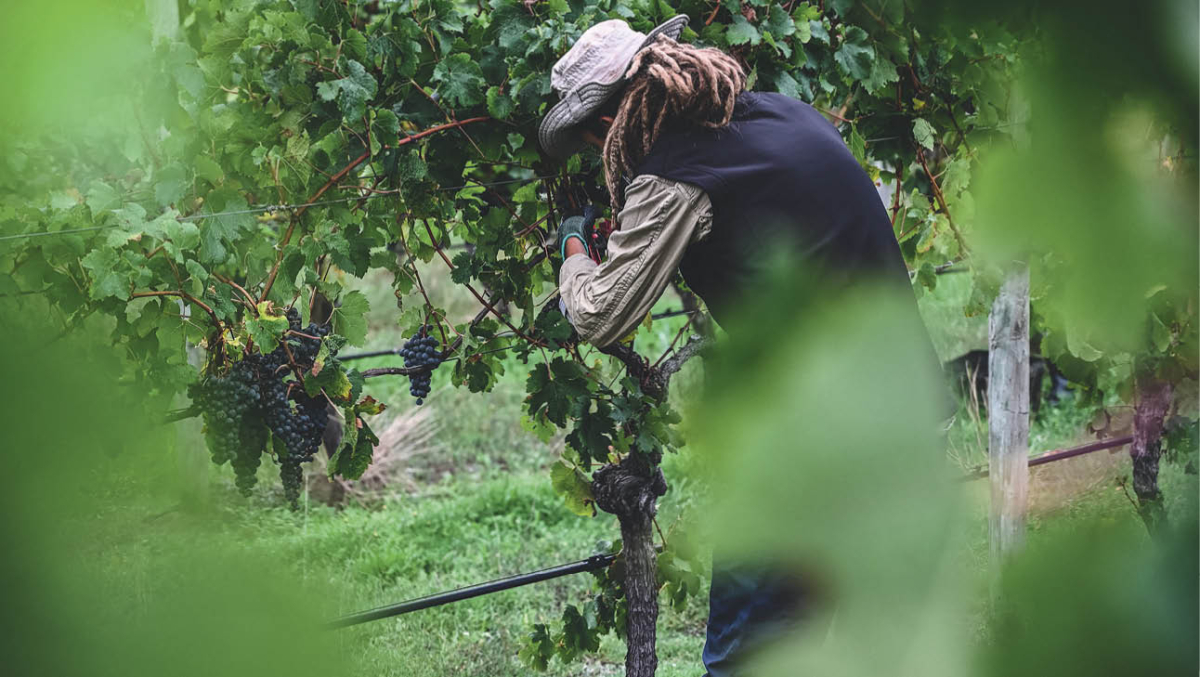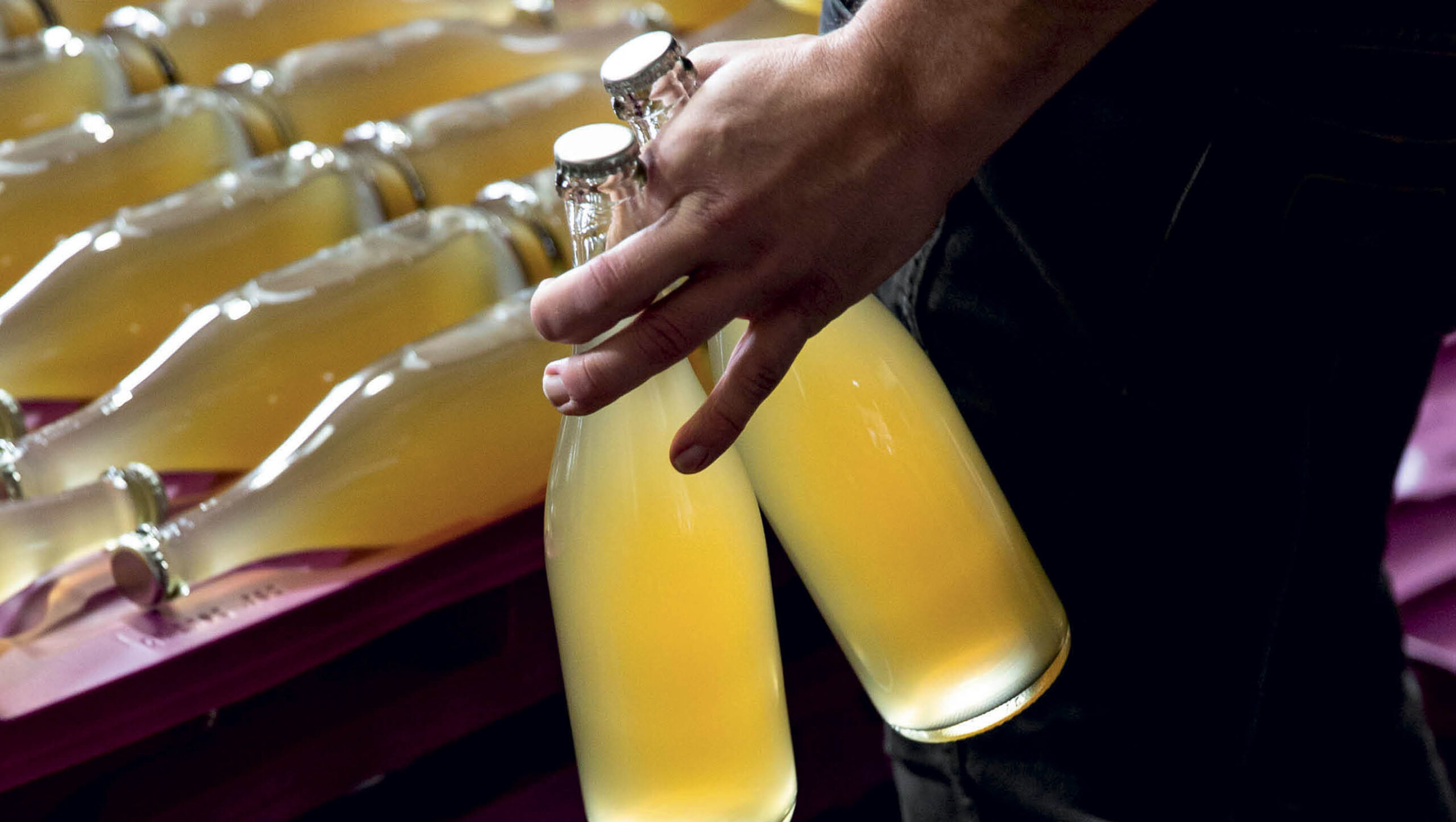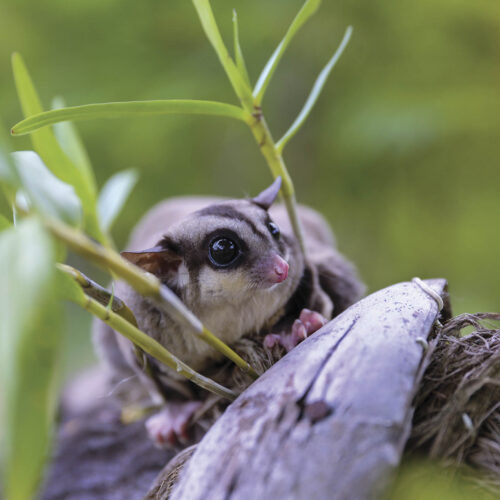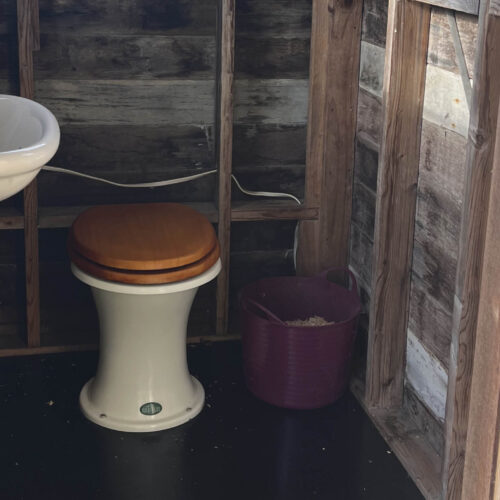What is a pet-nat wine?
2022-10-05T05:50:58+11:00
Max Allen explores the raw, rustic and in vogue pet-nat wines and the winemakers bringing them to life.
When I first came across pet-nat sparkling wines about a decade ago they were a revelation. Unlike the other, refined, crystal-clear sparkling wine I was familiar with – the delicate champagnes and bright proseccos – these pet-nats (from the French term pétillant naturel or ‘naturally sparkling’) were rustic and cloudy. They gushed out of the bottle and sat there all hazy and foamy in the glass. They tasted deliciously different, too: more like homemade wine, or farmhouse cider, or even overly fizzy kombucha.
Since then, pet-nats have become popular with a new generation of drinkers: the style’s rule-breaking, smashable, anything-goes character appeals to people looking for wine that’s fun and celebratory.
What sets this style apart from other conventional sparkling wines, such as champagne (which undergoes a secondary fermentation in bottle and is then disgorged, resulting in a clear finished wine), is the fact that the fizziness in a pet-nat comes from the wine finishing its primary fermentation in the bottle.
In effect, it’s like raw, unrefined wine – another part of the style’s appeal for consumers looking for more wholesome, unprocessed food.
This is why pet-nats are almost always cloudy: the tiny particles of grape pulp and yeast leftover from fermentation stay in the bottle, forming a haze in the wine and falling as a muddy sediment at the bottom of the bottle, waiting to be roused up when you open and pour.
Another crucial feature of the style is that pet-nats – by definition – are made without any added preservatives. If the winemaker added sulphur dioxide to the wine when it went into bottle (as almost all conventional winemakers do to preserve the wine), it would almost certainly stop the fermentation – meaning there would be no bubbles, which is the whole point of the style!
This is also why pet-nats are often associated with the natural (or ‘lo-fi’ or ‘minimal intervention’) wine movement.

The revival of ancient winemaking techniques, such as fermenting white wines on skins in amphorae or making wines without adding anything or taking anything away, is very much part of the natural movement. The pet-nat technique fits neatly into this trend: indeed, another French name for this style of production is méthode ancestrale because this is how all sparkling wines were made before winemakers in Champagne perfected the art of secondary fermentation and disgorging (the méthode champenoise, or ‘traditional method’) in the 18th century.
You should be aware, though, that despite containing no added preservatives and the fact that lots of lo-fi winemakers do make pet-nats, not all pet-nats are ‘natural’. Some, for example, are fermented using commercial, cultured yeast – very much a no-no in the hard-core natural wine club, where wild yeast fermentation is de rigeur.
Also, conscientious organic and biodynamic consumers need to always keep in mind that, despite the ‘wholesome’, natural image of this style (and because some of the organic claims made by some winemakers may be dubious) not all pet-nats are made from certified organic or biodynamic grapes.
As ever, look for a certification logo on the bottle label if this is important to you and you want to be sure.Two different ways to make sparkling wine
The trick to making sparkling wine is to capture the carbon dioxide produced during fermentation inside a bottle. There are a number of different ways to do this. Here’s two of them:
1. Traditional
This method, used to make champagne or top-quality Australian sparkling wine, is when fully-fermented, dry, filtered, clear, still wine is put into a bottle with a small amount of sugar and yeast and sealed with a crown cap or wired-down cork. The yeast ferments the sugar, producing a small amount of alcohol and lots of carbon dioxide, which dissolves into the wine. The yeast collects as a leesy sediment on the inside of the bottle. The bottle is then gently shaken and turned upside down (this process is called ‘riddling’) so that all the yeast lees collect in the top of the neck. The neck is then dipped in freezing cold brine and the bottle is opened: CO2 gas in the wine disgorges the plug of frozen lees out of the bottle, leaving a clear, fizzy wine behind. The bottle is topped up with a little extra wine and sealed.
2. The pétillant naturel method
Towards the end of its fermentation, just before all the sugar in the grape juice has been converted to alcohol, still-fermenting, raw, unfiltered wine is put into a bottle and sealed. The wine continues to ferment in the bottle until all the remaining residual sugar has converted to alcohol. A very small number of pet-nat makers might then riddle and disgorge the wine if they’re feeling fancy – but most leave all the hazy, cloudy, leesy solids in the wine as a characteristic part of the style. Because this is a fairly imprecise method, it’s hard for the winemaker to confidently judge exactly how much residual sweetness (and, therefore, potential CO2) is left in the wine at bottling, and what other kinds of (perfectly natural and harmless) microbial activity might also take place because of the lack of sulphur dioxide. This is one of the reasons why some pet-nats are very gushy when you open them, and why some can have a very rustic, funky flavour when you taste them.
A chat with the winemakers:
Steve James of Voyager Estate, Margaret River, WA
When you’re making this style of wine it’s super important to have really clean fruit. You can’t add preservatives because you need the wine to continue fermenting in the bottle, so you’re really relying on the quality of the fruit. We hand-pick the merlot grapes and then whole-bunch press them and let the juice settle and keep it cool during ferment. It’s made from some of the original 1978 plantings in the vineyard – now certified organic – so we wanted to do a retro type of wine, using old school winemaking. It sells like hot cakes at cellar door. We’ve been blown away by the response – it brings in and appeals to a newer generation of drinkers. And it’s fun: we love our serious wines – but wine’s meant to be fun, isn’t it?
Chris Carpenter of Lark Hill, Canberra District, ACT
I’m looking to make a bit more of a refined méthode ancestrale style than a full-on funky pet-nat. So I make sure the juice is as clean as it can be before fermentation, and ferment the wine with a sparkling-specific yeast that produces a clearer base wine than if I’d let it ferment with the wild, natural yeasts. A lot of pet-nats tend to gush when you open them because they are so cloudy and have so much sediment (the carbon dioxide dissolved in the wine under pressure forms bubbles when the bottle is opened – and the more solids there are in the wine, the more rapidly the bubbles form). I work quite hard to avoid this – which is ironic because this style of wine is supposed to be about not working hard at all.
Con-Greg Grigoriou of Delinquente Wine, Riverland, SA
I made my first pet-nat in 2014. It started out as a curio – nobody was making this style of whacky wine in the Riverland back then. But pet-nat has since become the central part of our range. A lot of times people make pet-nat as an opportunistic wine, an after-thought. But for us, it’s the most important wine we make. You have to take a lot of care: you have to make sure that the best, cleanest-tasting wine possible goes into the bottle because you can’t filter it or you’d filter out the yeast you need for the fermentation to continue. And it can be stressful: even though I’ve been doing it for seven years, I know that I’m not in control – once it’s in the bottle, there’s nothing you can do about it. You can’t be sure exactly how it’s going to turn out. But I love that element of the unknown.
This article was first published in the print copy of our Spring 2021 issue (OG 128).








